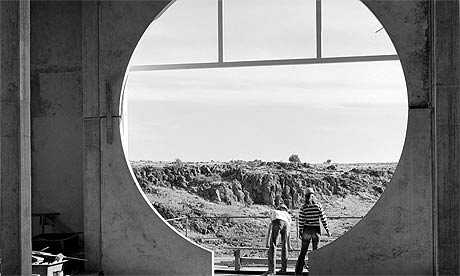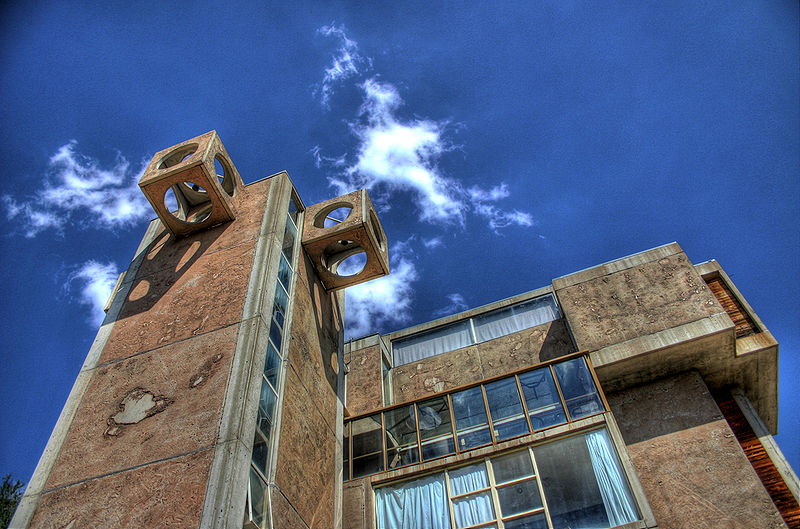 The success of China’s insta-cities is dubious even with the iron fist of authoritarianism set to crush dissenters, but dense “cities in a building” or “cities in the sky,” attempts at large-scale, ecologically friendly developments influenced by the work of the late Arcology designer Paolo Soleri, have a particularly spotty track record. Abu Dhabi’s Masdar City (even a diminished version) may prove the exception, but top-down developments seldom satisfy human desires, even if they’re ostensibly good for us.
The success of China’s insta-cities is dubious even with the iron fist of authoritarianism set to crush dissenters, but dense “cities in a building” or “cities in the sky,” attempts at large-scale, ecologically friendly developments influenced by the work of the late Arcology designer Paolo Soleri, have a particularly spotty track record. Abu Dhabi’s Masdar City (even a diminished version) may prove the exception, but top-down developments seldom satisfy human desires, even if they’re ostensibly good for us.
In a smart Aeon essay, Jared Keller writes of Soleri’s Arizona desert dream and explores why its offshoots, potential goldmines, don’t pan out. An excerpt:
In 1956, Soleri and his wife Corolyn ‘Colly’ Woods moved just miles from Phoenix’s out-of-control suburban sprawl to set up an architectural workshop, dubbed Cosanti (from the Italiancosa and anti, or ‘before things’), in Paradise Valley to develop his unique philosophy of architecture. One of Soleri’s earliest visions was Mesa City, a proposed city the size of Manhattan with 2 million inhabitants. Over five years, Soleri would draw hundreds of feet of scrolls detailing the intricate structures and landscape of this hypothetical metropolis.
In 1970, Soleri finally broke ground on Arcosanti, an experimental city and ‘urban laboratory’ that has been under construction for nearly half a century. To the average visitor, Arcosanti looks like a college campus sprouting in the middle of the desert, molded from the red silt of the surrounding mesa. The complex is marked by a cluster of soaring stone apses, crafted in Soleri’s distinct, casting-inspired architectural style, designed to absorb sunlight and power the town’s energy grid. The majority of buildings are oriented to the south to capture the sun’s light and heat, while an open roof design yields maximum sunlight in the winter and shade in the summer. Artisans live and work in a densely packed compound, designed for maximum energy efficiency and sustainability. The community’s permanent residents keep greenhouses and agricultural fields, and income from bell-casting goes to maintaining the town’s infrastructure.
Arcosanti is as socially efficient as it is sustainable. The buildings and walkways are built in a more dynamic formation than a conventional city grid, not just to conserve resources but also to encourage increased social interaction between residents, forcing them to bump into each other in various open-air atriums, gardens and greenhouses. Living quarters are clustered in a honeycomb of sparse, minimalist apartments, all virtually identical. The open design and emphasis on sustainable living has created a distinctly hippy, communitarian vibe; the population of the town is mostly Soleri fanatics and bell-casting artisans. The city has never been officially finished, and while the current population wavers around 80, the town was designed to sustain some 5,000. …
Despite Soleri’s best efforts, it’s not clear that humanity is ready for the perfect architectural utopias he imagined.•





